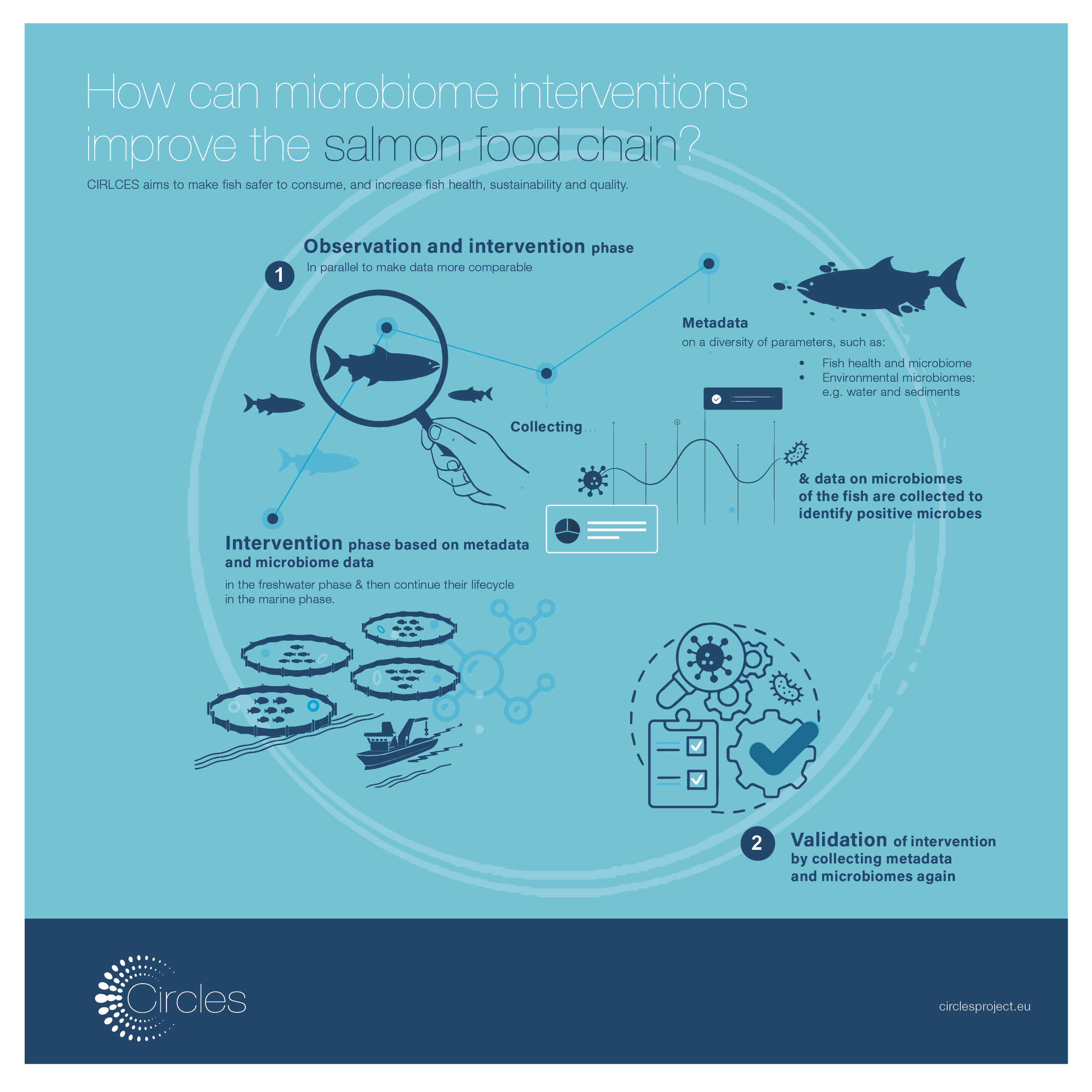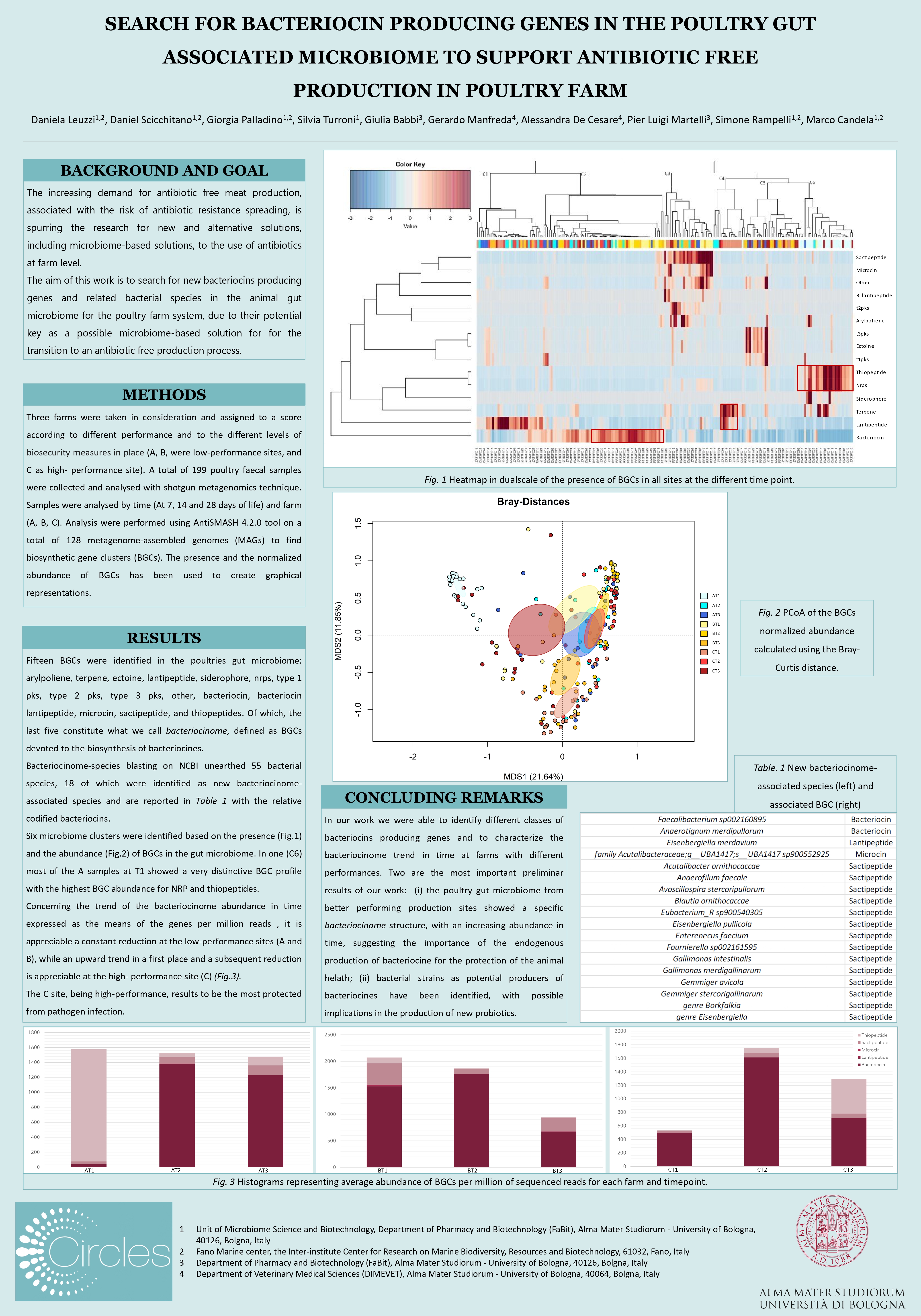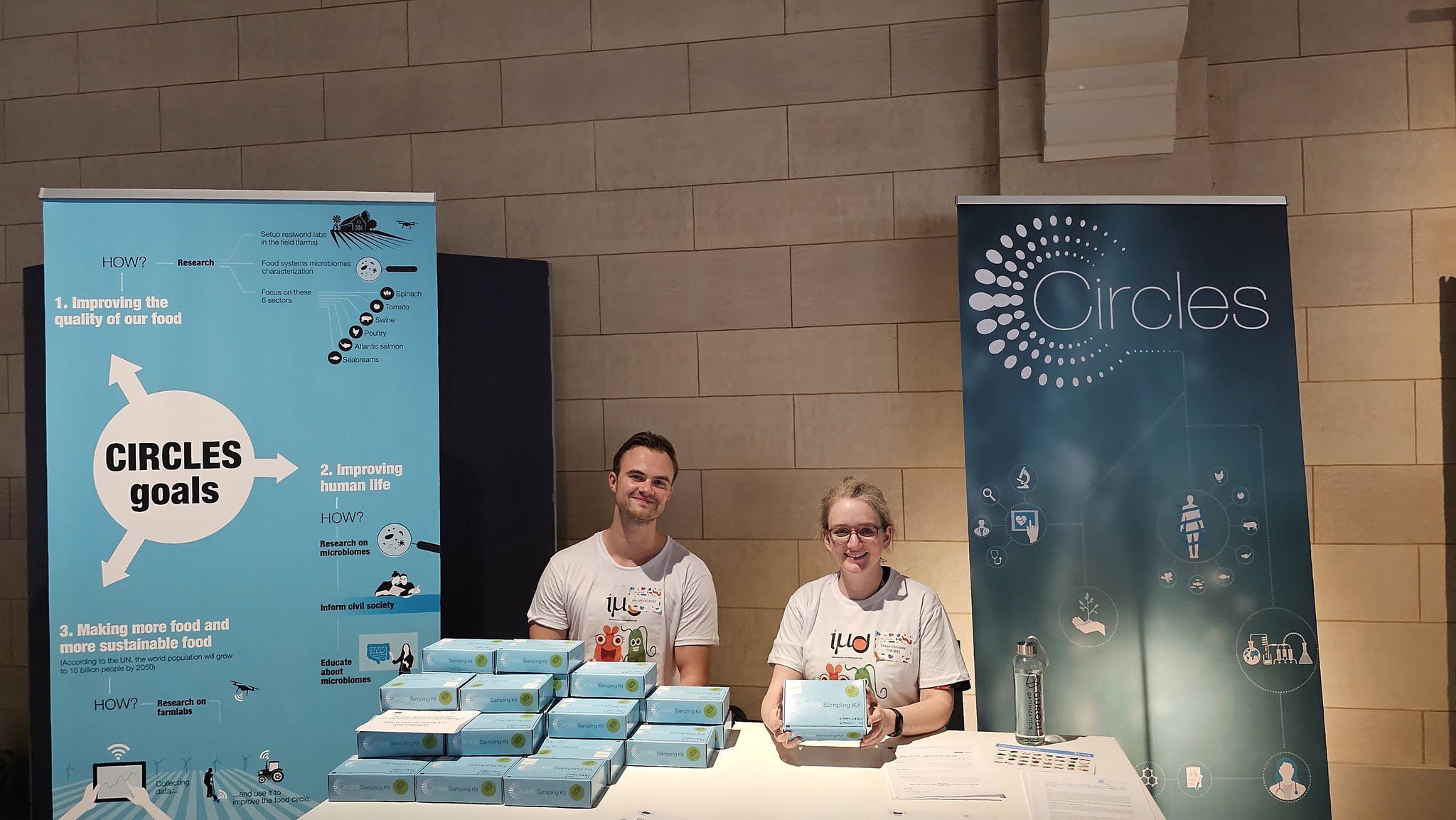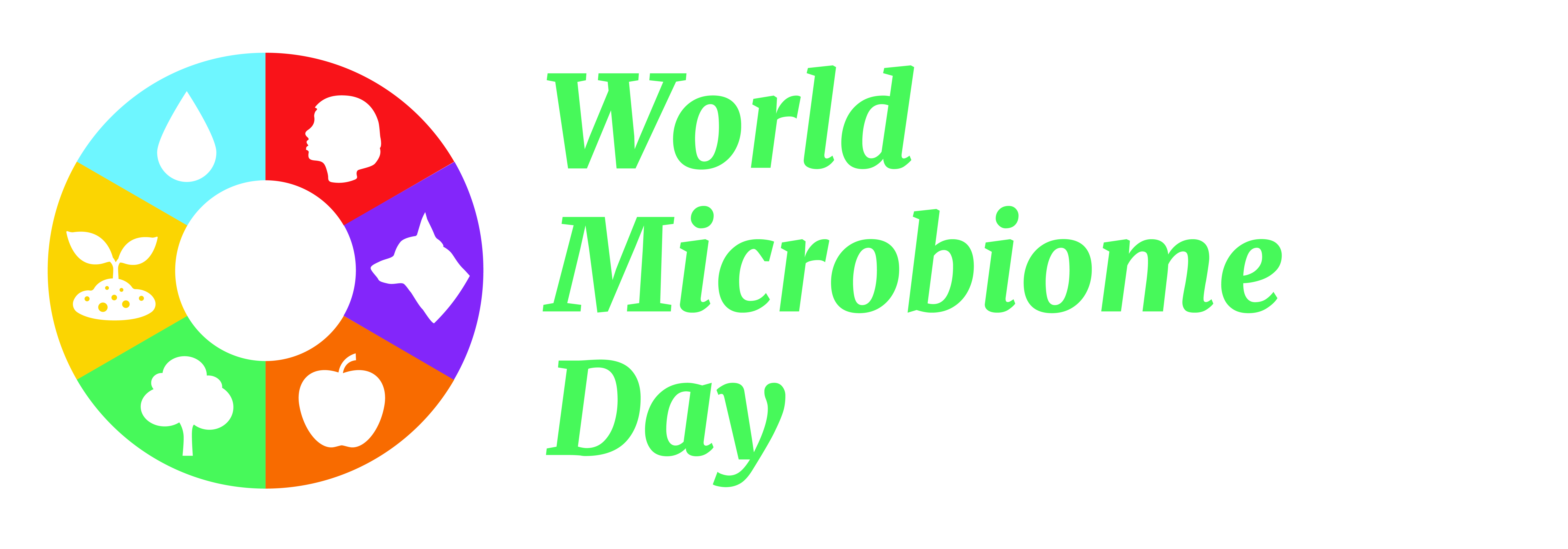By Eleni Nikouli & Kostas Kormas – School of Agricultural Sciences, Volos, Greece*
For most people fish are considered either as the major ingredient for delicious dishes, from plain to haute cuisine, or simply just another animal group with remarkable diversity, as they live almost everywhere in the ocean and inland waters. But there’s more to fish than deliciousness or variety. Firstly, fish make up one of the largest and most untouched source of protein and other essential nutrients for humans. They participate in trophic webs (“who eats who?”), and in some cases they control population sizes of other fish or animals, in habitats as small as temporal streams to large oceanic areas. Fisheries, alongside aquaculture farms, are a substantial part of the Gross Domestic Product worldwide and the major income for several maritime countries. A possible collapse of fisheries would impact whole national economies and, for this, fisheries management is among the prime political issue in several countries or international organisations.
Public awareness for the role of microbiomes is increasing at a high rate, proportionally to the scientific progress in the field. We know that us humans, and practically every other macroorganism, are born, live and die with a close association of multiple microorganisms. Even after death, all life continues to trigger microbial life (i.e. the necrobiome), keeping the continuation of life possible via recycling of basic chemical elements. In science, the term “holobiont” has been coined in order to describe all these biological relationships. Actually, the term suggests that each macroorganism is inseparable from its microbial communities regarding its biology, ecology and evolution. It has been estimated that each plant or animal hosts 3 times more microbial cells than their own cells – if these microbial cells were to be extinct, we would face humanitarian disasters or even mass extinction events very soon!
Fish are no exception to the holobiont theory, of course. However, fish as holobionts have one special feature: they spend their whole lives in a microbe-dominated environment, rendering them not only holobionts but rather hybrid ecosystems swimming in a microbial sea. As a reference, there are about 5 bacteria in each drop of sea water. Viruses can be x10 or x100 times even more abundant! If one adds the movement of sea water and fish motility, we can see that fish not only swim in a natural microbial culture medium, but they are also exposed to completely different sets of microbial communities. On the other hand, fish themselves release materials into their environment that carry their own microbial communities and as such they tend to alter the microbial sea. We could easily consider fish as “superorganisms” in terms of their associated microbial world.
Fish microbiota (i.e. the sum of microbes that are found in any biological sample) form complex communities. This complexity is reflected on the multiple and crucial roles the microbiota imposes to their hosts. The metabolic functions of these microbiota are a kind of “functional services” offered to the host (but the host in turn, pays back, too!) which are studied via the microbiomes, i.e. the collection of genomes of the microbiota. Fish microbiomes are pivotal in the development, reproduction, behaviour, nutrition, immunity and stress response of the fish.
On the other hand, fish microbiomes get affected by a wide array of external factors which are related to their host and environment. Starting from the environment, the composition and function of fish-associated microbial communities are shaped, or even regulated, by salinity differences (freshwater vs. marine), temporal changes in short- and long-term scales, rearing conditions and pollution or toxic substances. Factors that are related to the fish itself and can exert impact on fish microbiomes are known to be associated with the genetic identity of the fish. This means that each fish species seems to harbour its own distinct microbial community. Between difference fish species these communities share quite similar metabolic functions and are influenced by:
-
- Age or developmental stage
- Sex and sexual maturity
- Captivity (wild and farmed fish is an analogue of wild and captive animals in a zoo!)
- Feeding habits and diet (quality, quantity, feeding frequency, etc.)
- Individual variability (not all individuals of the same fish species are identical, just like us humans!)
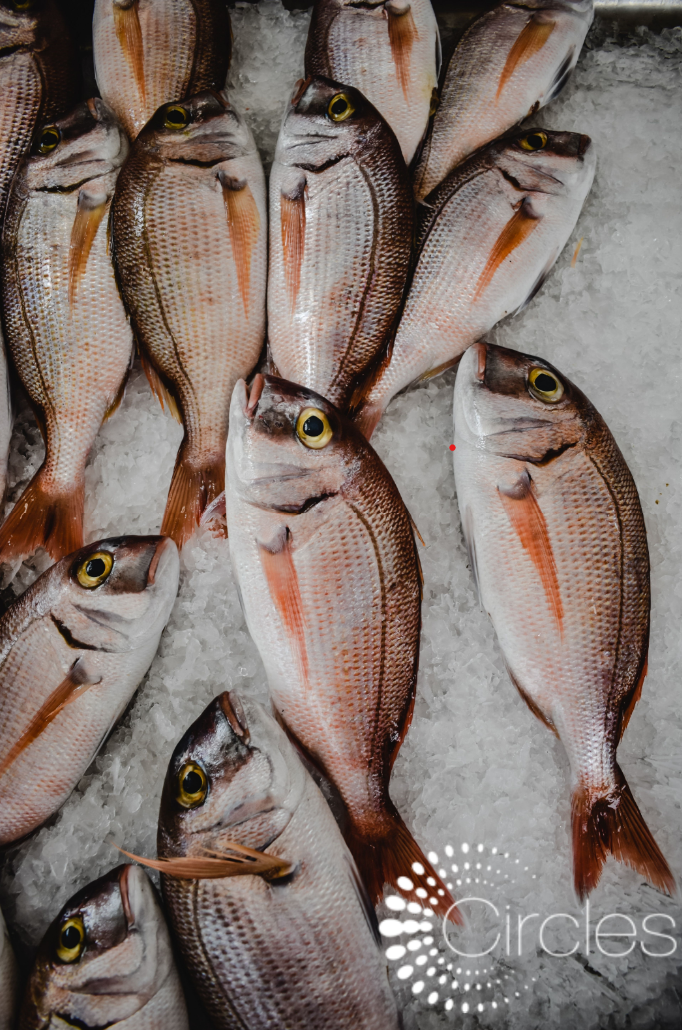
Fish microbiomes can be envisaged as a world map where different countries represent the quite distinct microbiomes one can find on the different fish body parts or tissues. The skin, gill and oral microbiomes, for example, undergo continuous exposure to the surrounding sea water along with all its microbes and, for this reason, they might be more vulnerable to pathogens, or impacted by sea water environmental changes such as pollution. The gut microbiome, on the other hand, is more isolated and protected from the external environment, and flourishes under more stable conditions, being largely dependent on the ingested feed.
Some of the above-mentioned fish-microbe interaction mechanisms are interweaved via complex pathways, forming a difficult to unravel, yet fascinating, scientific issue. In CIRCLES we put a collective effort in the -as much as possible- holistic study on the microbiomes of two major aquaculture fish species, sea bream Sparus aurata and Atlantic salmon Salmo salar. In our lab in Greece, along with our colleagues from Italy and Spain, we have started describing the microbiota of sea bream and its environment, from individuals originating from both the aquaculture and the natural environment. In CIRCLES we believe that the knowledge on the microbiota and microbiomes of the fish we investigate is the stepping stone for any attempt to successfully manipulate or engineer the microbiome towards a more sustainable, safe, productive and nutritious production of reared fish.
* Department of Ichthyology and Aquatic Environment, School of Agricultural Sciences, 384 46 Volos, Greece
E-mail for contact purposes: kkormas@uth.gr

